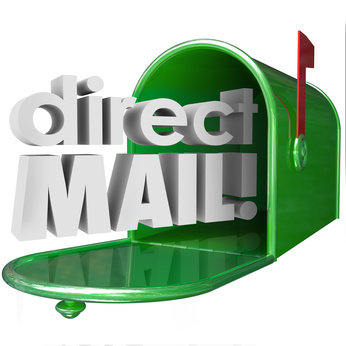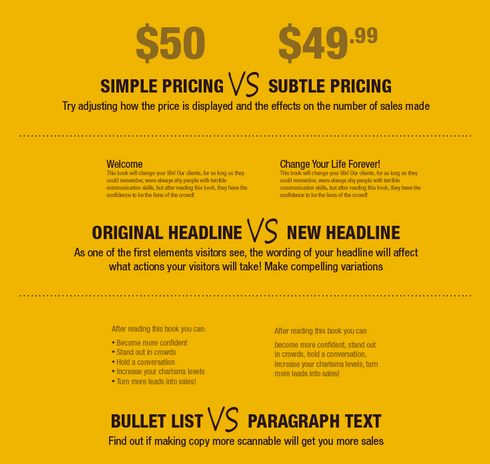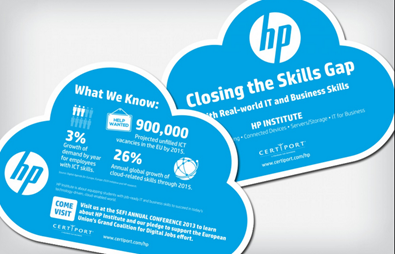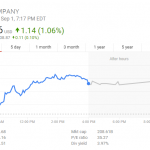Does direct mail even work?
Short answer – oh yeah. Businesses spent over 40 billion dollars in 2014 on direct mail marketing. Direct mail has a higher response rate than email, display ads, and paid search. If you take a quick look in the mail box i’m sure you will find mail from local business on up to Best Buy, Walmart, McDonalds, Home depot, etc.
In this article we will explore the three main types of direct mail, how to design a successful piece, how often to send them, normal response rates, timing and split testing to get better response rates.

Types of direct mail
The 3 main types of direct mail that businesses use are: EDDM, house lists and bulk mailers. I’m sure many use all 3.
HOUSE LIST
If a house list is being used (a list you’ve created yourself) where all the addresses might be on different routes or different cities, using regular mail is the way to go. Although mailing to a list is more expensive the bulk mailings and EDDM, mailing to a list enjoys a much higher response rate and is a highly targeted way to advertise to clients. Lists can also be purchased through 3rd party websites like Melissa data. The bottom line is that no matter what form of advertising used, you should be building your house list.
EDDM (every door direct mail)
Eddm is a program offered through the post office website that allows business to send mailers to selected mail route. These mailers will be delivered to every mailbox on the selected route. This is effective for canvassing an area for potential clients. Repeat mailings are an effective way to keep your brand in front of your customers. Everything is done through the post offices website.
One major advantage to EDDM is it enables local targeting and specific route selection. This option is also cheaper than mailing to a house list. Last I checked EDDM was under 20 cents per piece mailed. The website has been developed over the past several years and is now very user friendly and easy to navigate. Read more about the kinds of mailers that the post office allows here:
BULK MAILERS
Bulk mailers are any mailing piece where your advertisement is added with several other businesses and sent out. These include ValPak, Money Mailer, Coupon Mail and others. The advantages here are that the price per piece is much lower, sometimes under 5 cents per piece, and is sent out to a much larger audience. The con is that your piece will be in the mix with several others and will get less exposure. Many times bulk mailers will actually help you design your coupon or mail piece.
Now that we have discussed the types of direct mail, we can get into some of the specifics of how to design a piece, how often to send mailers and what to expect with response rates. As shown below in this marketing pie chart, direct mail is highly effective.

What is a normal response rate?
According to the Direct Marketing Association, the median response rate on a house list is 3.37% while the median response rate on a prospect list is about 1%. That may not seem like a lot but if done correctly the yields can be huge. These rates increase drastically when mailers are sent to the same areas 2 or 3 times.
A “house list” is a list built by you consisting of past customers or persons that have expressed some interest in your product or service. A prospect list (think EDDM and Bulk Mail) is composed of potential clients.
Using these statistics, an average response rate when starting an EDDM campaign is 1% and that would be about normal. Bulk mailers are going to be a bit lower because the marketing piece is put together with several other marketing pieces from other businesses. As you start to grow your house list and develop a mailer, your response rates will increase.
DESIGN
The overall design will greatly affect the response rate, but, as long as the mailer conveys a clear message then people who are currently in need of your product or service will respond.
Headline
The headline is the most important part of the advertisement. Some people suggest spending the same amount of time on your headline as you do with the actual body of the advertisement or content.
Here is one famous headline by David Ogilvy: “At 60 miles an hour, the only thing you hear in the new Rolls Royce is the ticking of the dashboard clock…” Tell me you would not read the rest of that advertisement? Actually I would highly recommend his book “Confessions of an Advertising man.” It’s chalked full of potent information for writing headlines and ad copy.
Also, split test your headlines. Switch up the wording and ideas to see which one pulls better response rates. Facebook now offers ways to split test ads. This feature may be useful for pre mail testing purposes.
Body and Content
Body and content are secondary to the headline and image but are of equal importance. A common statistic says that on average 80% will read the headline but only 20% read the copy so make it count. After grabbing the reader’s attention, the job is now to sell.
As noted by an Entrepreneur.com article, a lot goes into writing copy, and the body of your advertisements. For the best results, a thorough understanding of your target demographics, or audience, is very helpful.
The style, diction, tone and voice of ad copy can be tailored to these demographics to “speak their language” and get the best results. The body is where the “call to action” is located. Like most things in life, writing copy is a grind and a skill that will improve over time. It can be helpful to hire an editor to refine your piece and offer suggestions. Here is a super cool study on eye movement patterns.
Calls to action and offers
Next up, after understanding your demographics, is to create a “call to action” and some compelling offer of value that get the prospect to respond. In the above piece they are offering a coupon and telling the reader to “Call today for a FREE Consultation!” Here the objective is to offer some kind of value and tell the reader what to do next.
Calls to action can take many forms but they all have one thing in common and that is to move the reader to take action. Examples of offerings are: deals with expiration dates, limited number of offers, general coupons, free “add-on” services, free offers (everybody likes the word free), free estimates, etc. Put an expiration date on the offer. Follow these offers by telling the reader what to do next – call now, visit our website, etc.
Image and colors
A carefully crafted image coupled with a well-crafted headline is potent magic. Simple, clear, visually appealing images are so effective at selling , like this Hut and Weber Ad titled “Hitler Vs Chaplin.” . An image should be interesting and immediately project what you want to say to your audience.
Here are some examples of effective advertising images. One thing that pops out is that the advertiser’s message is clearly displayed through the image. Take for example the #11 McDonalds advertisement. The message is simple and clear, McDonalds has Wi-Fi and French fries. Free and tasty. Go eat at McDonalds.
The colors, show on the above color scheme chart, should be chosen to compliment and support your general brand coloring if possible. Above all else, make the image visually appealing and as clear as possible. This heat map study shows where people look. It is pretty neat, and not entirely unrelated. If creating images is not your thing, consider hiring a graphic designer. There are many freelancers and established companies out there who can create wonderful images. Another option is to purchase images from stock photo websites.
Timing might matter
Most “big boy” business and many mid and smaller business send a constant stream of mailers all year long. I’ve heard some people say Fridays and Saturdays are best because it’s the end of the week and people are not in “work mode.” I’ve heard that Mondays are best for various reasons. The truth is that once your business is up to a certain level, and you’ve found success with mailers, most likely they will be sent out every day of the week.
How often to send mailers
Most businesses that use send direct mail successfully (local business, local realtors) recommend sending the same piece to the same list or route at least 3 times. Think marathon not sprint. Normally the response rate increases with each successive mailing. The general consensus is at least once a month but I’ve heard many success stories with sending more frequent mailings. This is backed up by countless articles. One from PMQ magazine says “Sending a mailing two or three times is comparable to going to the gym two or three times; repetition is paramount.
Send direct mail once per month at a minimum…. Your direct mail pieces should be a part of your overall marketing strategy, each doing its part to support the larger plan.” If the budget does not have room for at least 3 mailings to the same list/route then it’s better not to do it.
A local, one location restaurant in my neighborhood is and has been booming with business. The police eat there (so you know it’s good). Their main advertising budget is spent on sending menus out. They have a handful of areas that they mail to and as soon as they complete the cycle, they start over, mailing to the same address again and again. Part of the whole repeat game is branding and another part is trying to get clients at the right time.
That being said, depending on your business, you can use timing to your benefit. For example if you’re a landscaper then its best to send large volumes out around March when the season is just getting started. In retail seasonal flyers are sent corresponding to holidays. If gutter cleaning is your thing the it’s best to stack up the mailers for spring and fall. Yet again if you do hail damage repair and follow storms then you can send out flyers right after a nasty storm hits.
Refining the market – Define your target customer
After dipping your toes into direct mailing marketing, whether using a list, EDDM, or bulk mailing, certain patterns will start emerge. It will become clearer who exactly is responding to your advertising pieces. These people are your demographics. Is it males, females, younger people, older people, rich or middle class, and on and on. This information is valuable and will help you to greatly improve your response rates via route selection. If you have several marketing channels it’s helpful to have tracking numbers on the marketing pieces so you can find out where they are coming from. This can simply be a unique number or identifier printed on each mailer.
Develop the piece through split testing
The other part of refining the market is split testing. This is an ongoing process. Once you have a mailer that you would like to use, brainstorm 2 or 3 different headlines that you think would work and send out several of each. A tracking number or some kind of unique identifier will need to be printed on each version so responses can be tracked. See which one gets a better response rate. You can repeat the process again using different headlines or slight variations on a headline that’s already winning.
This refining process can be used on Images, offers, general colors of the mailer, placement of text, size of mailer, the date of the mailing and many other factors until your mailer has been streamlined and gets great response rates. This mailer can be used over and over again for years and get fantastic results. Remember to test only one variable at a time. Another thing that can be done to reduce expense is to split test on social media like facebook ads before sending out a mailer.
Using the gathered information for other purposes
While split testing and refining the market pay attention to the demographics. In this HP postcard above you can see they have a very specific piece here. Once you start to identify your most active types of clients, the mailers can be developed to “speak their language” meaning using words, phrases, tone and general language that is most compatible with your audience.
You wouldn’t market a Ford Mustang the same way you would market a mini-van. The cool thing about identifying your demographics and most active types of customers is that this can be reflected in your whole business image, including the website, general color scheme and even the logo design.
Stuck? Check out the competition
So much of design depends on the products and services that are being offered that it’s a good idea to look at your competition to see what kinds of mailers they are doing and mirror these to get a good idea for a starting piece. Look at several competitors and try to find recurring themes. This is a great place to start. Check out their over-all designs and the messages they are trying to convey. How does the piece “feel”? Is it warm, direct, factual, short, long?
Creating a mailer for direct mail can seem overwhelming and if it’s new to you then most likely there will be some new skills that will start developing. If all else fails, creating the whole postcard, or mail piece can be outsourced at a reasonable price. All you will have to do is take it to the post office or send it off to your bulk mailer.
















